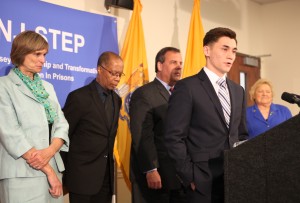In the spring of 1932, 43,000 people (including 17,000 veterans) marched on Washington DC to demand WWI bonus money that had not been paid out. It was known as the Bonus March. Most of the veterans had been out of work for a long time and were really struggling during the first few years of the Great Depression. President Hoover sent in the Army (led by General Douglas MacArthur) and had them forcibly removed. A smaller group marched on Washington the next year and FDR avoided the mistake of his predecessor, sending his wife to talk to them instead of using armed force. However, the veterans did not get their money until Congress passed the Bonus Act in 1936, four years after the march and 18 years since the end of WWI. It would be neither the first nor the last time that America had not honored its debt to her veterans.
As America celebrates Memorial Day with baseball, barbeque and the beach, the Veterans Administration has been in the news because its delays, inefficiency, incompetence and corruption has caused the deaths of many veterans. This is just the latest tragedy that has befallen our Soldiers, Sailors, Marines and Airmen.
During the Pacific Nuclear testing in the 1950’s, thousands of sailors were exposed to dangerous radiation (in the picture below, they just shield their eyes from the blast). At first, they were told that they weren’t in any danger. As time passed and more and more sailors got sick, the evidence became overwhelming that they got sick from radiation exposure. They were eventually compensated, but it was much too late and not nearly adequate.
The military experimented on its personnel with amphetamines and LSD in the 1950’s as well (members of the Armed Forces have historically made great guinea pigs, as they are legally bound to follow the orders of their superiors and also disproportionately made up from poor and/or minority groups).
Earlier this year,
U.S. District Judge Claudia Wilken ruled the Army must notify veterans of possible health concerns related to the experiments. In November, the Army requested a delay in the process, claiming the notification process would cost nearly $9 million. This request was denied after Wilken ruled the cost borne by the Army paled in comparison to the health of veterans.
During Vietnam, members of the Armed Forces were exposed to Agent Orange. This selection from Wikipedia sums it up nicely:
While in Vietnam, the veterans were told not to worry, and were persuaded the chemical was harmless. After returning home, Vietnam veterans began to suspect their ill health or the instances of their wives having miscarriages or children born with birth defects might be related to Agent Orange and the other toxic herbicides to which they were exposed in Vietnam. Veterans began to file claims in 1977 to the Department of Veterans Affairs for disability payments for health care for conditions they believed were associated with exposure to Agent Orange, or more specifically, dioxin, but their claims were denied unless they could prove the condition began when they were in the service or within one year of their discharge.
By April 1993, the Department of Veterans Affairs had only compensated 486 victims, although it had received disability claims from 39,419 soldiers who had been exposed to Agent Orange while serving in Vietnam.
In the 1990’s, servicemen were instructed to take the Anthrax Vaccine. Early on, there was some suspicion that there were a number of problems with it and that it may have caused the Gulf War syndrome. Those that refused to take it were threatened with a court martial and/or a dishonorable discharge (I declined to take it in the late 1990’s while in the NJ Army National Guard).
Five years ago, CNN reporter Jack Cafferty asked the question “Why don’t we take better care of our veterans?” (click on it and read in horror how little has changed in five years). The article cites delays at the VA, inadequate care, skyrocketing rates of PTSD, addiction and suicides. Little was done then and little is being done now.
A few years ago, I began hearing about how therapists were asked to diagnose soldiers and veterans with borderline personality disorder instead of PTSD (if a soldier has PTSD, then the military must pay for that soldier’s treatment; borderline personality disorder is a diagnosis that is considered lifelong (so not the military’s fault) and the treatment of it is not paid for by the government or by insurance). The New York Times published the story about a female therapist (a Captain) who was discharged because she had borderline personality disorder. She didn’t have borderline personality disorder; instead, she had PTSD from serving in a war zone. The military has a long history of diagnosing personnel with disorders they don’t have in order to get rid of them.
Despite all of this, many veterans would like to get treated by the VA. But a number of them are ineligible because they did not get an honorable discharge. Thousands and thousands of warriors from Vietnam to the present have been given an other than honorable discharge for reasons such as PTSD or substance abuse. They end up in our emergency rooms, institutions, jails or in the streets. It is a fate that is both unfair and economically disastrous for everyone involved. (The Daily Show had a great segment on this issue last winter: to see it, click here)
Many of those aforementioned substance abuse problems began in the military when doctors prescribed the servicemen painkillers. One of my current students at Rutgers was a Marine in Afghanistan. While over there, he was wounded. He experienced PTSD and had trouble sleeping. There were many Marines in his unit with similar issues. The unit doctor prescribed them all with Xanax and Oxycotin. They were able to sleep better and return to the field, for a time. Eventually, they became addicted and were discharged under other than honorable conditions. My student returned to NJ and quickly moved on from pills to heroin. He ended up on the streets of Paterson. His story is the rare case in that it has a happy ending – he got sober, learned a trade, went to community college and then transferred to Rutgers. He is a good, honorable man and an excellent student. And he is ineligible for VA services.
Two weeks ago, the New York Times ran a front page story about veterans and painkillers. It’s fantastic and I urge you to read it here.
In the May 25, 2014 NJ Star Ledger, State Senate President (and probable 2017 Gubernatorial candidate) Steve Sweeney wrote an op-ed piece about the sacrifice of veterans and all the things that NJ is doing for them. There is only the briefest mention about mental health treatment and nothing about addiction treatment:
…we must do whatever we can to help veterans, those who remain in service and those who become civilians. The wounded should be cared for and treated with the best medical and rehabilitative services we have. This includes physical, mental and psychological wounds. These are all casualties of war.
And yet my student and thousands of other veterans like him in NJ can’t get federal or state funded treatment. Republicans and Democrats like to wear flag pins and talk about the sacrifice of veterans yet they continually fail them when it comes time to provide and fund treatment. And many citizens are not much better – they repost memes and pictures on Facebook and engage in hashtag activism, but that doesn’t solve this problem. Call your local and state officials. Let them know you are outraged. Tell them you want funding (real funding) for the mental health and addiction treatment of all veterans, including those with other than honorable discharges.
————————————————–
The great exception to all of this has been the G.I. Bill, which has paid for millions of veterans to go to college since the end of World War II. The G.I. Bill was partly responsible for the post-war economic boom of the 1950’s and 60’s and largely responsible for the success of that generation. The G.I. Bill is both a reward and an investment in our veterans. We need to build on it.
——————————
Addendum (5/26 12:07 pm): Steve Fulop, the current mayor of Jersey City and another 2017 Gubernatorial hopeful, penned his own op-ed for Memorial Day as well (you can see Sweeney and Fulop lining each other up in their sights). While it is better than Sweeney’s and follows up on my own summation, it misses on a few of my aforementioned points.

